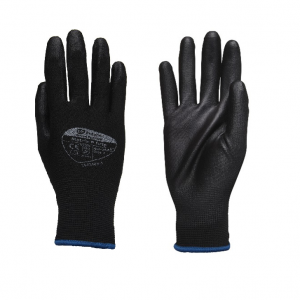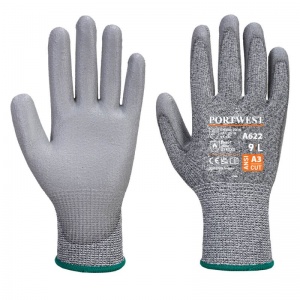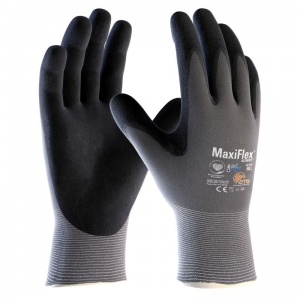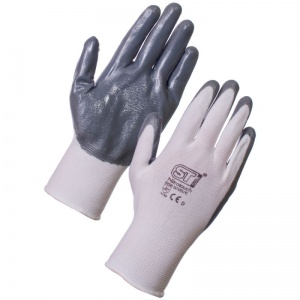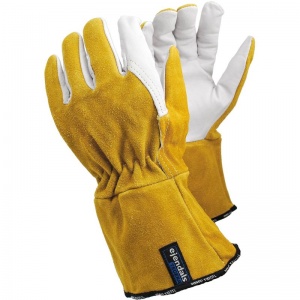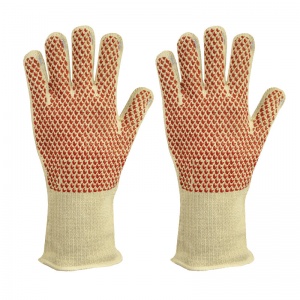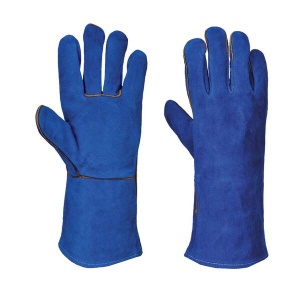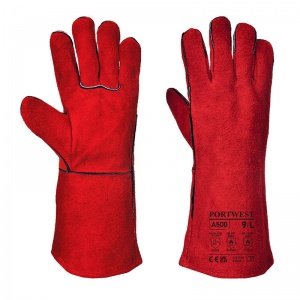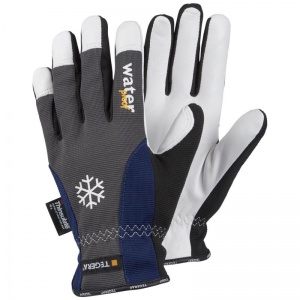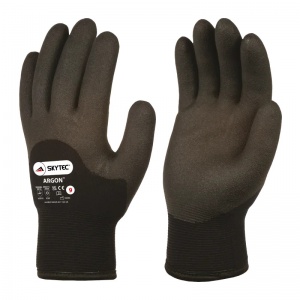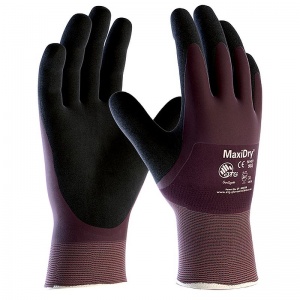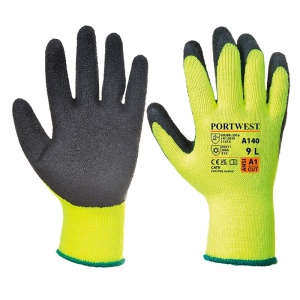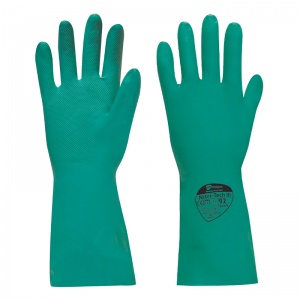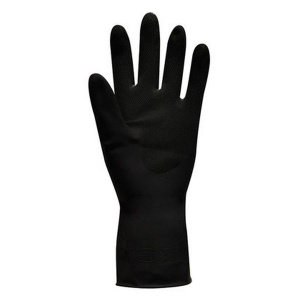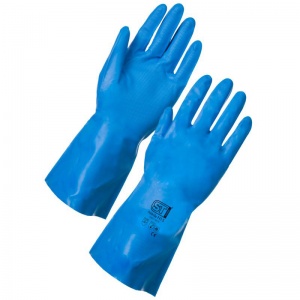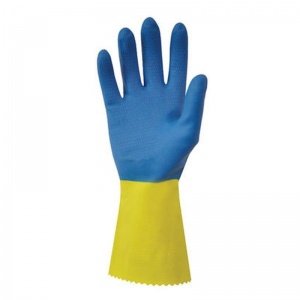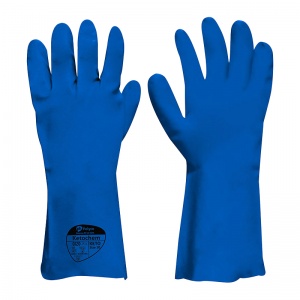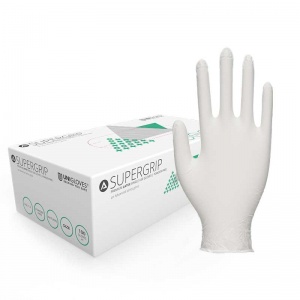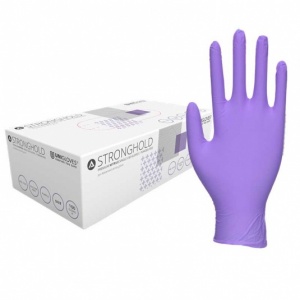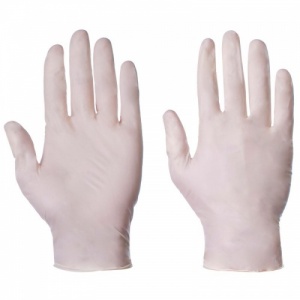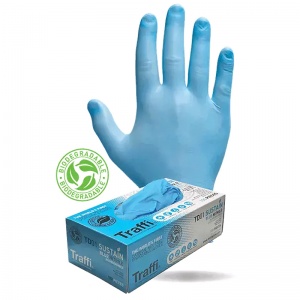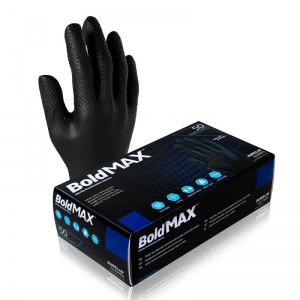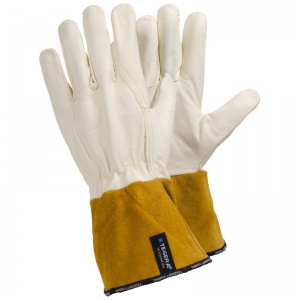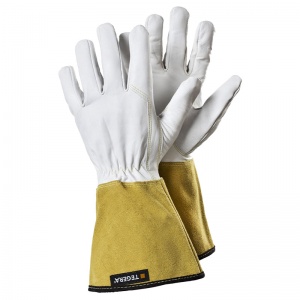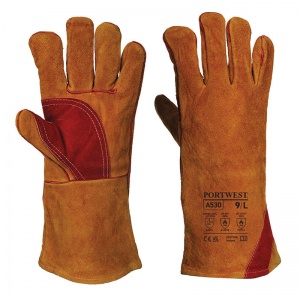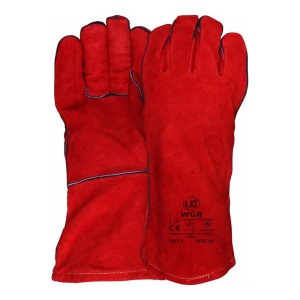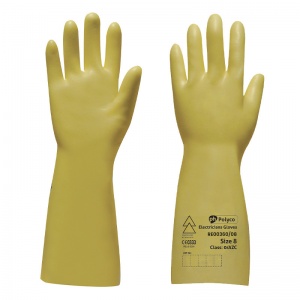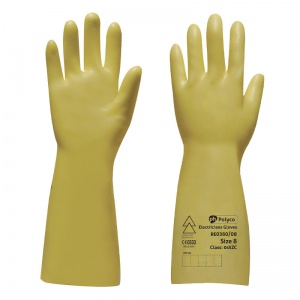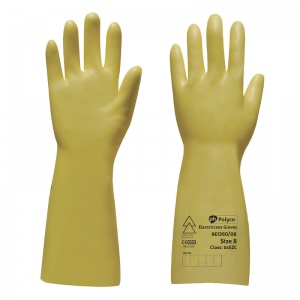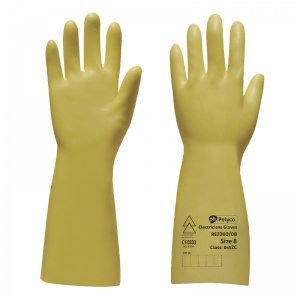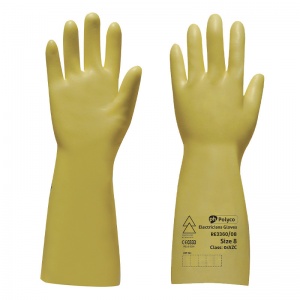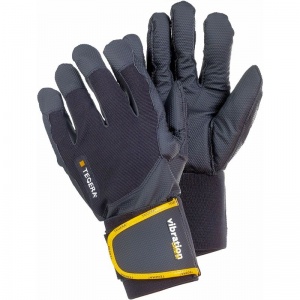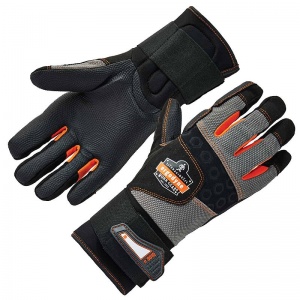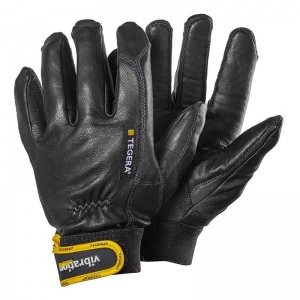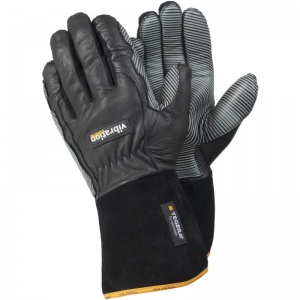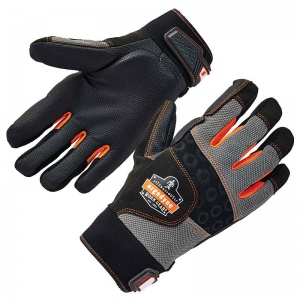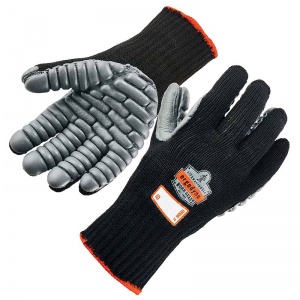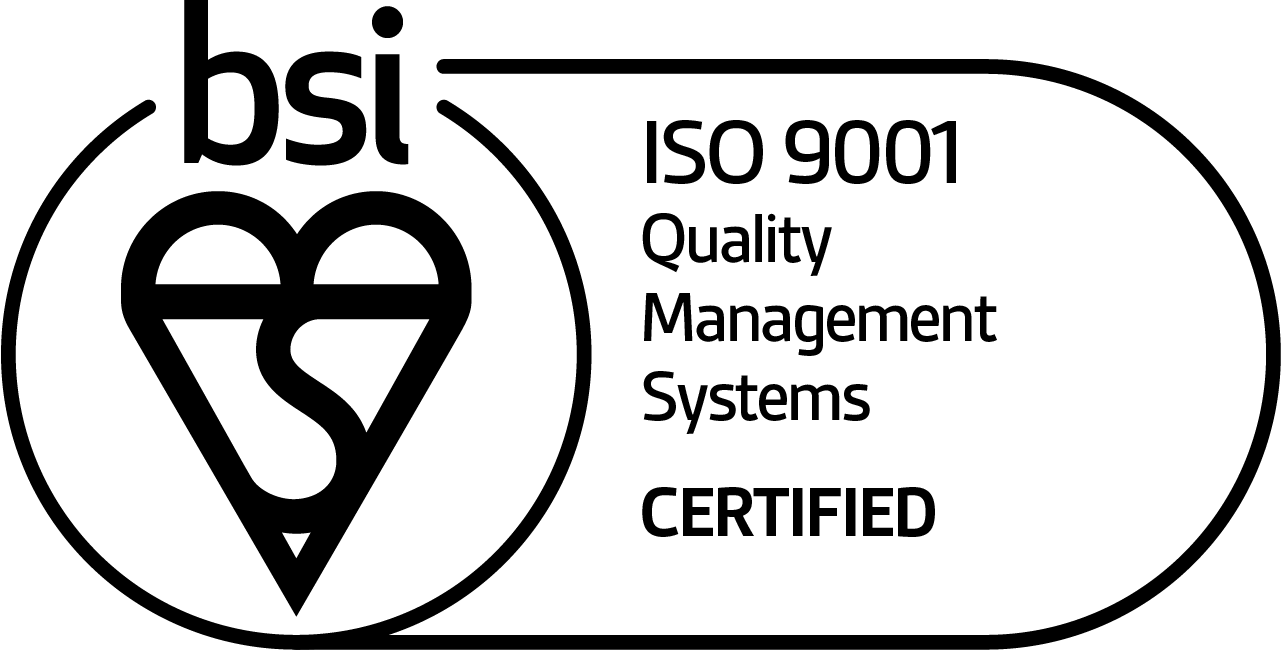Your Guide to EN Standards for Gloves
1 Comment14 December 2022
Whether you're a seasoned professional or you're unsure of which gloves are right for your application, EN standards can be incredibly confusing. With so many numbers and ratings to look at, you can quickly find yourself getting lost in all the technical jargon.
As a vital part of any PPE tool bag, it's essential you know exactly what you're looking at when purchasing safety gloves. We've put this Guide to EN Standards for Gloves together to break down the most important glove-related EN standards into digestible chunks, so you can find the perfect pair of gloves for your occupation.
So What Does the Guide Cover?
There's a lot to take in when it comes to EN Standards for Gloves. If you know what you're looking for, click any of the quick links below to jump right in. Alternatively, keep scrolling to find expert recommendations and detailed information on all things glove safety.
Information Centre
EN 420 - General Requirements for Safety Gloves
EN 420 is the basic overarching standard that defines general requirements for safety gloves. Whilst it doesn't outline specific protection and resistance levels, it does include basic guidelines that all gloves must meet.
These basic guidelines for safety gloves are:
- The gloves themselves should not impose a risk or cause injury.
- The pH level of the gloves should be as close as possible to neutral.
- Leather gloves should have a pH value between 3.5 and 9.5.
- The highest permitted value for chromium is 3mg/kg.
- Details of any substance used in the glove that is known to cause allergies should be specified.
EN 388 - Mechanical Hazard Safety Gloves
Protection from mechanical risks is one of the most common requirements when it comes to work gloves. EN 388 is expressed by four numbers, or performance levels, each representing test performance against a specific hazard:
- Abrasion Resistance
- Cut Resistance
- Tear Resistance
- Puncture Resistance
The higher the number or letter, the better the performance and protection. When either of these numbers is replaced with an X or N/A, this doesn't mean the glove has failed the test, but that it wasn't tested for that particular hazard.
Take the table below as an example. These gloves feature maximum tear-resistance whilst still performing very well when it comes to puncture protection.
| Standard | Resistance Rating |
| Abrasion Resistance | Level 2 |
| Cut Resistance | N/A |
| Tear Resistance | Level 4 |
| Puncture Resistance | Level 3 |
| ISO Cut Resistance | Level D |
Essential Wear for:
- Builders
- Construction Professionals
- Fitters
- Manual Handling
- Roofers
- Scaffolding
Our Favourite EN 388 Work Gloves
We've contacted product experts to showcase a selection of our favourite mechanical hazard safety gloves. Take a look below:
- Pair of multi-purpose handling gloves
- Suitable for use in wet and dry conditions
- Breathable and open design is comfortable
- Offers strong all-round protection
 | | In stock now |
|
|
- Pair of PU palm-dipped handling gloves
- Provide an impressive level C cut-resistance
- Offers resistance to abrasions, tears and heat
- Fine 13 gauge liner ensures dexterity
 | | Dispatched in 1 - 5 working days |
|
|
(2) - Highly breathable so you remain comfortable
- Thin construction for improved sensitivity
- Ideal for long hours and repetitive tasks
- Price shown is per pair of gloves
 | | In stock now |
|
|
- Enhanced abrasion resistance for extra safety
- Elasticated knitted cuff for a secure fit
- Supplied in three different colours to fit your style
- Price shown is per pair of gloves
 | | In stock now |
|
EN 407 - Flame, Heat and Fireproof Gloves
Whether you work in a foundry or a kitchen, protection against fire and extreme heat needs no introduction. Gloves accredited under EN 407 offer protection against the following:
- Flammability
- Contact Heat
- Convective Heat
- Radiant Heat
- Small Splashes of Molten Metal
- Large Splashes of Molten Metal
Below is the same table you will find on every single EN 407 glove listing on our site. As you can see, the example gloves below score well for contact heat, allowing the user to handle material with a temperature of up to 250°C for up to fifteen seconds.
| Standard | Resistance Rating |
| Burning Resistance | Level 2 |
| Contact Heat Resistance | Level 2 (250°C) |
| Convective Heat Resistance | Level 1 |
| Radiant Heat Resistance | N/A |
| Resistance to Small Molten Splashes | Level 1 |
| Resistance to Large Molten Splashes | N/A |
Essential Wear for:
- Blacksmiths
- Foundry Work
- Mechanics
- Soldering
- Welding
Our Favourite EN 407 Work Gloves
Our product experts have put together a few of our favourite EN 407 gloves, all of which are resistant to one or more of the standards listed above.
- Pair of heat-resistant welding gloves
- Leather construction is highly durable
- Long safety cuff protects the wrist
- Withstands contact heat temperatures of up to 100°C
 | | Currently unavailable. Please check back soon |
|
|
(5) - Pair of heat-resistant oven gloves
- Designed to withstand heat of up to 250°C
- Nitrile coating offers impressive levels of grip
- Ideal for baking, oven use and food preparation
 | | In stock now |
|
|
- Pair of leather welding gauntlets
- Best suited to welding and metalwork
- Withstands abrasion, tears and punctures
- Offers resistance to heat and burns
 | | In stock now |
|
|
- Pair of leather welding gauntlets
- Suitable for welding and metal handling
- Provides exceptional 250° contact heat resistance
- Ensures flexibility for tactile applications
 | | In stock now |
|
|
- Pair of PU palm-dipped handling gloves
- Provide an impressive level C cut-resistance
- Offers resistance to abrasions, tears and heat
- Fine 13 gauge liner ensures dexterity
 | | Dispatched in 1 - 5 working days |
|
See MoreEN 511 - Thermal and Cold Weather Safety Gloves
EN 511 markings can be found on gloves that provide protection from cold and water. This set of tests reveals how well a glove protects against contact with cold, cold in the surrounding area and exposure to water.
As with the standards mentioned above, EN 511 can be read using the three digits that represent:
- Resistance to Convective Cold
- Resistance to Contact Cold
- Permeability to Water
The example below shows a glove that has strong resistance to contact cold, allowing you to handle material that might be frozen or extremely cold. The Level 0 represents failure during the waterproofing test, indicating that these gloves may not be the best option if you work with water or if you're outdoors in the rain.
| Standard | Resistance Rating |
| Convective Cold Resistance | Level 1 |
| Contact Cold Resistance | Level 2 |
| Water Permeability | Level 0 |
Essential Wear for:
- Cargo Handling
- Cold Storage
- Dockyard Workers
- Freezer Work
- Food Processing
- Offshore
- Outdoor Work
- Shipping
Our Favourite EN 511 Thermal Safety Gloves
We've consulted product experts to get the very best thermal and waterproof safety gloves. Take a look below for a small selection of our favourites:
(14) - Pair of thermal winter gloves
- Ideal for wet weather work
- Thinsulate material keeps hands warm
- Offers high levels of fingertip sensitivity
 | | In stock now |
|
|
(17) - Feature a 100% waterproof lining for -50°C temperatures
- Best suited to outdoor work, DIY work, maintenance and more
- Protects hands from mechanical threats as well as winter risks
- Price is per pair of gloves
 | | In stock now |
|
|
(13) - Pair of waterproof thermal work gloves
- Designed for use in harsh conditions
- Feature a Velcro wrist strap for a secure fit
- Reinforced index and fingertips for protection
 | | In stock now |
|
|
(2) - Tough waterproof gloves for conditions as low as -30°C
- Also protect against heat, abrasion, tears, oil and food contamination
- Impressive grip ideal for most tasks in industrial applications
- Price is per pair of gloves
 | | In stock now |
|
|
- Pair of thermal palm-coated gloves
- Latex dipped palm offers high grip
- Bright yellow design ideal for dark conditions
- Offers resistance to tears and punctures
 | | In stock now |
|
EN 374 - Protection from Chemicals and Micro-Organisms
Slightly different from the standards we've encountered so far, EN 374 specifies the capability of gloves to protect against chemicals and/or micro-organisms. On all of our EN 374 glove listings you'll find a table detailing exactly which chemicals the glove is resistant to.
The table will include any number of the following chemicals:
| Chemical |
| Methanol |
| Acetone |
| Acetonitrile |
| Diethylamine |
| Tetrahydrofuran |
| Ethyl Acetate |
| n-Heptane |
| Sodium Hydroxide 40% |
| Sulphuric Acid 96% |
| Nitric Acid 65% |
| Acetic Acid 99% |
| Ammonoim Hydroxide 25% |
| Hydrogen Peroxide 30% |
| Hydroflouric Acid 60% |
| Formaldehyde |
Essential Wear for:
- Chemical Exposure
- Domestic Cleaners
- Farmers
- Gardeners
- Industrial Cleaners
- Laboratory Work
- Pesticide Handling
- Scientists
Our Favourite EN 374 Chemical Safety Gloves
Whether you're cleaning, cooking or testing chemicals in a lab, you need gloves tailored to the chemicals you'll be using. Take a look below for some of our best chemically resistant gloves and gauntlets.
(2) - Pair of chemical-resistant work gloves with or without lining
- Outstanding protection from detergents, oils and solvents
- Features a diamond grip pattern ideal for handling objects
- High abrasion resistance protects user and makes gloves durable
 | | In stock now |
|
|
- Pair of chemical-resistant gloves with excellent abrasion and tear resistance
- Chlorinated design provides a hardened abrasion resistant material
- Protect against a wide range of chemicals and cleaning agents
- Grip pattern provides safe handling in wet and dry conditions
 | | In stock now |
|
|
- Offer enhanced chemical protection
- Feature 15 mil NBR thickness
- Flock lined for added comfort
- Price shown is per pair of gloves
 | | In stock now |
|
|
(1) - Pair of chemical-resistant latex gauntlet-style gloves
- Provide protection against a wide range of chemicals
- Ideal option for industries such as cleaning
- Roughened surface for added grip
 | | In stock now |
|
|
- Pair of double-dipped latex work gloves
- Double dipped to provide extra protection against chemicals
- Ergonomically designed to minimise hand fatigue
- Soft cotton flock lining absorbs perspiration to keep hands cooler
 | | In stock now |
|
|
- Pair of chemical-resistant lightweight safety gloves
- Provide protection against solvents, including MEK, acetone and toluene
- Extremely tight fitting to ensure dexterity
- Unlined for easy donning and doffing
 | | In stock now |
|
EN 455 - Gloves for Healthcare and Medical Professionals
The EN 455 Medical Gloves for Single Use standard covers any glove that can safely be used for medical work. The glove must adhere to four separate parts before it is considered suitable to be used for medical practice:
- Part 1: Requirements and testing of gloves for freedom from holes
- Part 2: Requirements and tests for physical properties
- Part 3: Requirements and tests for biological evaluation
- Part 4: Requirements and testing for shelf life determination
Essential Wear for:
- Doctors
- Dentists
- General Practitioners
- Nurses
- Patient Examination
- Surgeons
Our Favourite EN 455 Medical Gloves
For nurses, doctors and physios, there's a different standard for disposable gloves. Take a look below to see some of our most popular options that are tried, tested and approved by medical professionals up and down the country.
- Disposable purple nitrile gloves with extended cuffs
- Suitable for medical industries, examination and inspection
- Powder-free and latex-free design for comfort
- Price shown is per box of 100 gloves
 | | In stock now |
|
|
- Textured pattern ensures outstanding grip
- Ideal for use in dental and healthcare industries
- High grade latex is resilient and can withstand knocks
- Price shown is per box containing 100 gloves
 | | In stock now |
|
|
(1) - Excellent protection against chemicals and cytotoxic drugs
- Ideal for use in pharmaceutical, laboratory and medical industries
- Thicker than average glove ensures durability and resilience
- Price shown is per box containing 100 gloves
 | | In stock now |
|
|
(1) - Low in latex proteins and powder-free for reduced skin irritation
- Feature a beaded cuff for a secure fit
- Supplied in natural colour and versatile design
- Price shown is per box of 100 gloves
 | | In stock now |
|
|
- Biodegradable gloves made with 100% premium nitrile
- Designed to protect against chemical and biological hazards
- EN 1186 food approved to prevent contamination
- Comfortable, well-fitting and textured for better dexterity
 | | In stock now |
|
|
- Powder-free disposable gloves with fantastic tensile strength
- Certified for medical, food, chemical and industrial industries
- Extra thick, ambidextrous, long-lasting and grippy gloves
- Supplied in a box of 50 disposable gloves
 | | In stock now |
|
EN 12477 - Gloves for Welding and Soldering
Welding is one of the most dangerous jobs out there. Only certain protective gloves can safely be used for this activity.
EN 12477 combines tests for EN 388 and EN 407, as welding gloves are required to protect from small splashes of molten metal, short exposure to convective heat, radiant heat and contact heat, as well as certain mechanical risks.
Essential Wear for:
- Blacksmiths
- Foundry Work
- Soldering
- Welding
Our Favourite Welding Gloves and Gauntlets
Welding is a dangerous game that demands heat and fireproof gauntlet style gloves. Whether it's leather you're after, or you want something with incredible grip stability, we've put together a list of our most reliable options below.
- Pair of heat-resistant welding gloves
- Leather construction is highly durable
- Long safety cuff protects the wrist
- Withstands contact heat temperatures of up to 100°C
 | | Currently unavailable. Please check back soon |
|
|
- Pair of leather welding gloves
- Offers excellent resistance to heat
- Water-resistant design ideal for quenching fires
- Provides outstanding all-round protection
 | | In stock now |
|
|
- Pair of heat-resistant welding gauntlets
- Designed to withstand temperatures of up to 100°C
- Full goatskin design offers high durability
- Provides excellent all-round mechanical protection
 | | In stock now |
|
|
- Pair of reinforced welding gauntlets
- Best suited to type A welding applications
- Reinforced premium leather offers high protection
- Excellent resistance to abrasions, tears and punctures
 | | In stock now |
|
|
(1) - Pair of high-quality, traditional red welders' gauntlets
- Ideal for for use in moderate-heat industries
- Designed with a minimum leather thickness of one millimetre
- Include cotton and fleece linings for outstanding comfort
 | | In stock now |
|
EN 60903 - Gloves for Electricians
One standard you can't skimp on it EN 60903. Pick the wrong gloves as an electrician and you risk serious injury or even death.
Gloves manufactured and approved according to EN 60903 are the only gloves that should be used when there is a risk for electrical shock. Please consult the table below to find out what kind of protection EN 60903 gloves offer based on their class rating:
| Class Rating | Tested at: | Approved for Work under: |
| Class 00 Gloves | 2500V | 500V |
| Class 0 Gloves | 5000V | 1000V |
| Class 1 Gloves | 10,000V | 7000V |
| Class 2 Gloves | 20,000V | 17,000V |
| Class 3 Gloves | 30,000V | 26,500V |
| Class 4 Gloves | 40,000V | 36,000V |
Essential Wear for:
- Electricians
- Maintenance Professionals
The Best Electricity Safe Gloves
When it comes to electrical exposure, you cannot afford to take any risks. See below for our best options based on the appropriate class rating for your application.
- Pair of electrician's gloves, protecting up to 500V
- Essential wear for those working around electricity
- Highly dexterous design enhances grip precision
- EN60903:2003 and IEC60903:2014 certified
 | | In stock now |
|
|
- Pair of electrician's gloves, suitable for up to 1000V
- Essential wear for those working around electricity
- Highly dexterous design enhances grip precision
- EN60903:2003 and IEC60903:2014 certified
 | | In stock now |
|
|
- Pair of electrician's gloves, suitable up to 7500V
- Essential wear for those working around electricity
- Highly dexterous design enhances grip precision
- EN60903:2003 and IEC60903:2014 certified
 | | Due to the testing of these electrician's gloves, they are usually delivered in 6 - 8 weeks |
|
|
- Pair of electrician's gloves, suitable for up to 17,000V
- Essential wear for those working around electricity
- Highly dexterous design enhances grip precision
- EN60903:2003 and IEC60903:2014 certified
 | | Due to the testing of these electrician's gloves, they are usually delivered in 6 - 8 weeks |
|
|
- Pair of electrician's gloves, suitable up to 26,500
- Essential wear for those working around electricity
- Highly dexterous design enhances grip precision
- EN60903:2003 and IEC60903:2014 certified
 | | Due to the testing of these electrician's gloves, they are usually delivered in 6 - 8 weeks |
|
|
- Pair of electrician's gloves, suitable up to 36,000V
- Essential wear for those working around electricity
- Highly dexterous design enhances grip precision
- EN60903:2003 and IEC60903:2014 certified
 | | Due to the testing of these electrician's gloves, they are usually delivered in 6 - 8 weeks |
|
EN 10819 - Anti-Vibration Safety Gloves
EN 10819 specifies vibration transmissibility in terms of vibration transmitted from a handle through a glove to the palm of the hand in one-third-octave frequency bands with centre frequencies of 25Hz to 1250Hz. At a high frequency, gloves with an EN 10819 marking are expected to reduce the level of vibration by 40%.
Anti-vibration gloves are especially important if you are risk of developing hand-arm vibration syndrome (HAVS) due to over-exposure to power tools.
Essential Wear for:
- Builders
- Construction Professionals
- Demolition
- Drilling
- HAVS Diagnosed Workers
- Jackhammering
- Power Tool Usage
Our Best Anti-Vibration Safety Gloves
Protect yourself against HAVS and ensure you're operating machinery and tools safely. Each of the products below work tirelessly to absorb shock and vibration, protecting your hands and arms as you work.
- Pair of anti-vibration gloves with touchscreen compatibility
- Made with special vibration-absorbing fibre for extra protection
- Wrist-supporting cuff for extra control
- Touchscreen compatible for use with mobile devices
 | | In stock now |
|
|
- Anti-vibration safety gloves with inbuilt wrist support
- Ideal for job roles that require usage of vibrating handtools
- Full-length AVC palm padding reduces vibration and palm impact
- Inbuilt wrist support aides in relief from repetitive motion discomfort
 | | In stock now |
|
|
- Pair of reinforced anti-vibration work gloves
- Reinforced index finger and padded palm for extra safety
- Made with vibration-absorbing Vibrothan fibre
- Suitable for use in harsh environments
 | | In stock now |
|
|
- Pair of anti-vibration and abrasion-resistant gloves
- Made with special vibration-absorbing fibre for extra protection
- Extra-long design and a safety cuff for a perfect fit
- Suitable for use in harsh environments
 | | In stock now |
|
|
(1) - Anti-vibration and tremor gloves for vibrating handheld tools
- Ideal for jackhammering, demolition, grinding etc.
- Full-length AVC palm padding reduces vibration and palm impact
- Gripping palm provides secure hold on tools and equipment
 | | In stock now |
|
|
- Lightweight anti-vibration work safety gloves
- Ideal for industries that involve the use of vibrating handtools
- Unique chloroprene rubber palm pad for absorbing vibration waves
- Breathable cotton/nylon seamless knit for a comfortable but firm fit
 | | In stock now |
|
Other Useful Pages
We've got a tonne of information on our website. If you're still unsure of what you need, take a look at some of our other informative articles below:
Safety Standards Explained
If you haven't got the information you're looking for, we have a set of detailed articles that go in depth with each specific standard. You can view these by following the links below:
The Last Word
We hope you've found our guide helpful and that the recommendations we've provided have proven useful. Please remember that doing a thorough risk assessment and investigation into the right standards for your work place is a must before purchasing gloves for professional use.
If we've missed an EN standard that you think is particularly important or you'd like to get in touch with us directly, feel free to drop us a line on Twitter or Facebook!
